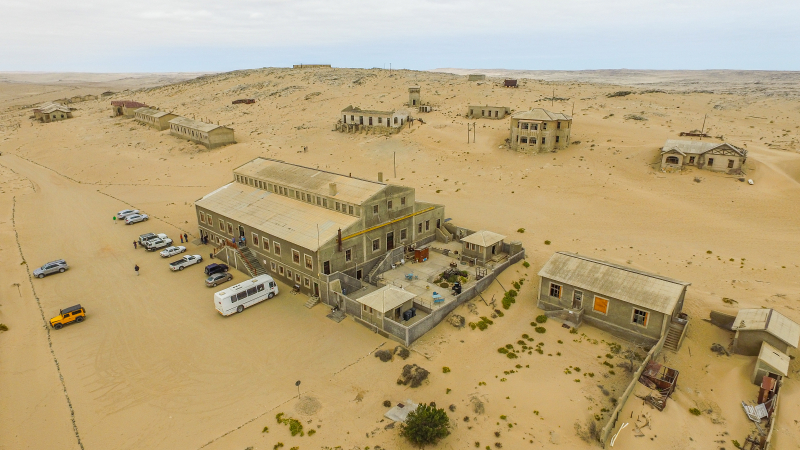Kolmanskop
In the Namib Desert in southern Namibia located Kolmanskop (Afrikaans for Coleman's hill, German: Kolmannskuppe), a ghost town which is a few kilometers inland from the port town of Lüderitz. It was named after a truck driver named Johnny Coleman who, during a sandstorm, abandoned his bullock cart on a small incline across from the settlement. Once a small but very wealthy mining village, Kolmanskop is now a popular tourist destination run by the joint venture NamDeb (Namibia-De Beers).
In 1908, while working in this area, the black worker Zacharias Lewala found a diamond and showed it to his supervisor, the German railway inspector August Stauch. After realizing that this area was rich in diamonds, a lot of German miners settled in the area, and soon after, the German government declared the large area a "Sperrgebiet", starting to exploit the diamond field.
Driven by the immense wealth of the first diamond miners, the residents built the village following the architectural style of a German town, with amenities and institutions including a school, hospital, ballroom, power station, theater and sports hall, skittle-alley, casino, ice factory and the first x-ray station in the southern hemisphere, as well as the first tram in Africa. It had a railway link to Lüderitz.
The town declined after World War I as the diamond field was gradually exhausted and was finally abandoned in 1954. The desert's geological forces mean that tourists now walk through houses knee-deep in sand. Kolmanskop is well-known to photographers for its settings of the desert sands reclaiming this once-prosperous town. Due to being located in the restricted area (Sperrgebiet) of the Namib desert, tourists need a permit to enter the town.
Location: Namib Desert, Namibia







